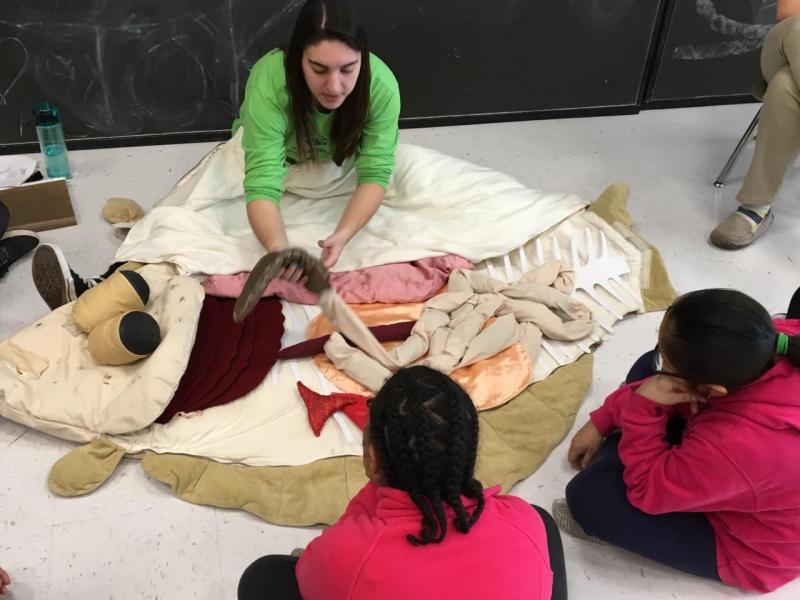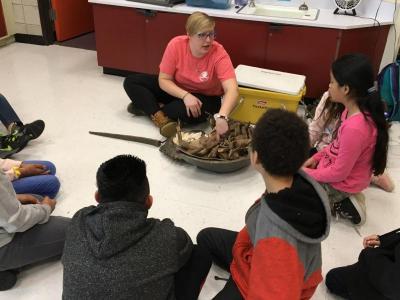Flexi the Flounder and Lydia the Limulus with the Lloyd Center for the Environment at Alfred J. Gomes School in New Bedford, MA by Katie Houseman, Lloyd Center Educator/Naturalist
Each February, while most schools are on February vacation, students at Alfred J. Gomes School in New Bedford, MA instead enjoy a variety of hands-on activities with their peers and teachers. Lloyd Center staff visited Gomes fifth graders this week to show and educate about two incredible ocean animals – the flounder and the horseshoe crab. Using models and pictures, students virtually dissected each animal to learn all about their amazing adaptations which help these and other sea creatures survive in their ocean habitat.
Using Flexi the Flounder, a larger than life model of a Winter flounder, fifth graders learn how these bony fish can camouflage using pigment-changing chromatophores. Students looked at actual photos to try to find the flounder hiding in the image. Students discovered how these fish have special eyes which migrate to one side as they develop, giving them their flat fish status.
As students opened up Flexi, they examined her stomach up close to find out what flounder eat. Many excited giggles and squeals were heard as students discovered creepy worms and shells inside! These cool flat fish are ambush predators, lying dormant on the ocean floor almost invisible except for their small eyes. They prey upon smaller fish and crustaceans and will even scavenge dead animals on the sea floor! After successfully going piece by piece through the flounder’s anatomy, students played a fish matching game to learn about other types of local fish and their tail adaptations.
Similarly, using Lydia the Limulus, a larger than life model of a horseshoe crab, Lloyd Center staff examined horseshoe crab anatomy with fifth graders. Throughout the program, students were able to take apart a model horseshoe crab as they discovered all the unique parts of this living fossil. Starting with the hard exoskeleton and learning about how horseshoe crabs use their bristly mouths to feed along the ocean floor, students again were able to get an up-close view of this curious creature.
Fifth graders were also presented with the opportunity to observe and touch live crabs. Gomes fifth-graders were challenged to compare the external body parts of modern-day crabs like the spider crab with the ancient horseshoe crab. Students were able to touch and even hold these incredible animals!
Both animals, though very different, have special parts which they use to protect themselves, get food and move around in their sandy homes. By handling live animals and these larger than life models, fifth-graders were able to make first-hand observations. This program encourages the importance for students to be caring stewards in the coastal habitats which surround cities like New Bedford.












